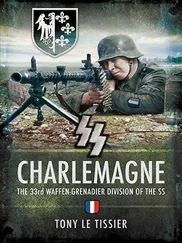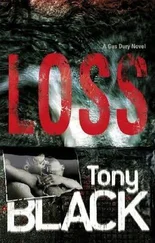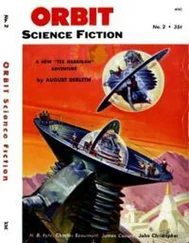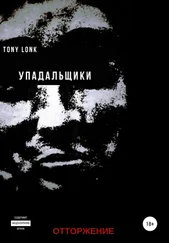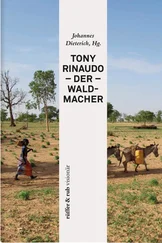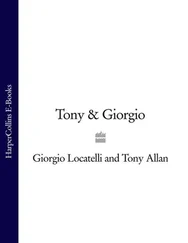However, Europe—or at least Brussels—was more than a little hesitant: Turkey’s application to join the European Union lay unaddressed for many years. There were good reasons for caution: Turkey’s prisons, its treatment of domestic critics and its inadequate civil and economic codes were just some of many issues that would need to be addressed before it could hope to get beyond a strictly trading relationship with its European partners. Senior European commissioners like the Austrian Franz Fischler openly voiced doubts about the country’s long-term democratic credentials. And then there were practical difficulties: as a member-state Turkey would be the second largest in the Union after Germany, as well as one of the poorest—the gulf between its prosperous western edge and the vast, impoverished east was huge and, given the opportunity, millions of Turks might well head west into Europe in search of a living wage. The implications for national immigration policies, as well as for the EU’s budget, could hardly be ignored.
But the real impediments lay elsewhere. [398]If Turkey entered the EU, the Union would have an external frontier abutting Georgia, Armenia, Iran, Iraq and Syria. Whether or not it made geographical sense to take ‘Europe’ to within one hundred miles of Mosul was a legitimate question; in the circumstances of the time it was unquestionably a security risk. And the further Europe stretched its frontiers, the more it was felt by many—including the drafters of the constitutional document of 2004—that the Union should explicitly state what it was that defined their common home. This, in turn, induced a number of politicians in Poland, Lithuania, Slovakia and elsewhere—not to mention the Polish Pope in Rome—to try unsuccessfully to insert into the preamble to a new European constitutional text a reminder that Europe was once Christian Europe. Had not Václav Havel, speaking at Strasbourg in 1994, reminded his audience that the ‘European Union is based on a large set of values, with roots in antiquity and Christianity’?
Whatever else they were, Turks were assuredly not Christian. The irony was that precisely for this reason—because they could not define themselves as Christian (or ‘Judeo-Christian’)—would-be European Turks were even more likely than other Europeans to emphasize the secular, tolerant and liberal dimensions of European identity. [399]They were also, and with increasing urgency, trying to invoke European values and norms as a lever against reactionary influences in Turkish public life—a goal that the member-states of Europe itself had long encouraged.
But although in 2003 the Turkish parliament finally removed, at European bidding, many longstanding restrictions on Kurdish cultural life and political expression, the lengthy hesitation-waltz performed by governments and officials at Brussels had begun to exact a price. Turkish critics of EU membership pointed insistently to the humiliation of a once-imperial nation, now reduced to the status of a supplicant at the European door, importuning support for its application from its former subject nations. Moreover, the steady growth of religious sentiment in Turkey not only produced an electoral victory for the country’s moderate Islamist party but encouraged the national parliament to debate a motion to make adultery, once again, a criminal offence.
In response to explicit warnings from Brussels that this could definitively jeopardize Ankara’s application to join the EU, the motion was abandoned and in December 2004 the European Union at last agreed to open accession talks with Ankara. But the damage was done. Opponents of Turkish membership—and there were many, in Germany [400]and France as well as closer to home in Greece or Bulgaria—could point once again to its unsuitability. In 2004 the retiring Dutch EU Commissioner Frits Bolkestein warned of the coming ‘Islamisation’ of Europe. The likelihood of negotiations proceeding smoothly diminished still further—Günter Verheugen, the EU Commissioner for enlargement, acknowledged that he did not expect Turkey to become a member of the Union ‘before 2015’. Meanwhile, the cost of future rejection or further delays—to Turkish pride and the political stability of Europe’s vulnerable edge—ratcheted up another notch. The Eastern Question was back.
That history should have weighed so heavily upon European affairs at the start of the twenty-first century was ironic, considering how lightly it lay upon the shoulders of contemporary Europeans. The problem was not so much education—the teaching or mis-teaching of history in schools, though in some parts of southeastern Europe this too was a source of concern—as the public uses to which the past was now put. In authoritarian societies, of course, this was an old story; but Europe, by its self-definition, was post-authoritarian. Governments no longer exercised a monopoly over knowledge and history could not readily be altered for political convenience.
Nor was it, for the most part. The threat to history in Europe came not from the deliberate distortion of the past for mendacious ends, but from what might at first have seemed a natural adjunct to historical knowledge: nostalgia. The final decades of the century had seen an escalating public fascination with the past as a detached artifact, encapsulating not recent memories but lost memories: history not so much as a source of enlightenment about the present but rather as an illustration of how very different things had once been. History on television—whether narrated or performed; history in theme parks; history in museums: all emphasized not what bound people to the past but everything that separated them from it. The present was depicted not as heir to history but as its orphan: cut off from the way things were and the world we have lost.
In eastern Europe, nostalgia drew directly upon regret for the lost certainties of Communism, now purged of its darker side. In 2003 the Museum of Decorative Arts in Prague mounted an exhibition of ‘pre-revolutionary clothing’: boots, underwear, dresses and the like from a world that had only ended fourteen years beforebut was already an object of detached fascination. The exhibition attracted many older people for whom the grey sameness of the shoddily-made items on display must have been a recent memory. And yet the response of visitors suggested a degree of affection and even regret that caught the curators quite by surprise.
Ostalgie , as it was known in Germany, drew on a similar vein of forgetful remembering. Considering that the GDR—to adapt Mirabeau’s description of Hohenzollern Prussia—was little more than a security service with a state, it demonstrated in the glow of retrospect a remarkable capacity to evoke affection and even longing. While Czechs were admiring their old clothes, Germans were flocking to Goodbye Lenin : a film whose ostensible mocking of the shortages, dogmas and general absurdity of life under Erich Honecker was knowingly offset by a certain sympathy for its subject and more than a little ambivalence at its sudden loss.
But Germans and Czechs, like other central Europeans, have had all too much experience of sudden, traumatic national re-starts. Their selective nostalgia for whatever might be retrieved from the detritus of lost pasts made a lot of sense—it was not by chance that Edgar Reitz’s Heimat: Eine Deutsche Chronik attracted an average of nine million West German viewers per episode when it was televised in 1984. The obsession with nostalgia that swept across the rest of Western Europe in the last years of the old century, giving rise to heritage industries, memorials, reconstructions, reenactments and renovations, is not so readily accounted for.
What the historian Eric Hobsbawm described in 1995 as ‘the great age of historical mythology’ was not of course unprecedented—Hobsbawm himself had written brilliantly about the ‘invention of tradition’ in nineteenth-century Europe, at the dawning of the national age: the sort of ersatz culture dismissed by Edwin Muir (writing of Burns and Scott in Scotland 1941 ) as ‘sham bards for a sham nation’. But the creative re-imagining of the national past in France and the UK at the end of the twentieth century was of another order altogether.
Читать дальше

